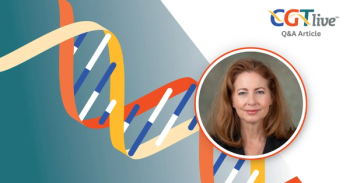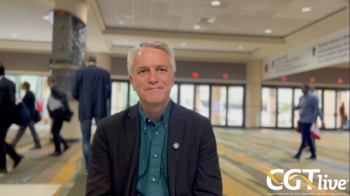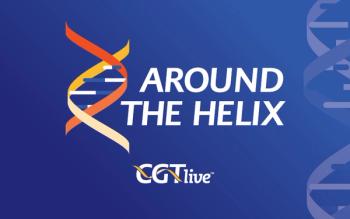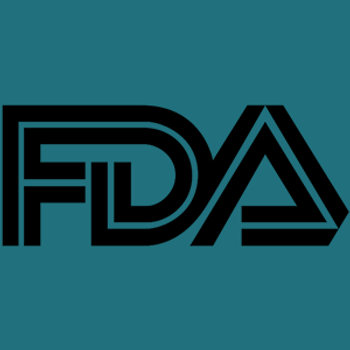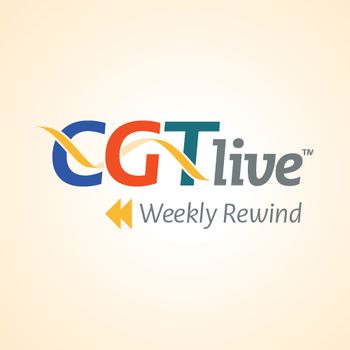
Evaluating Immunotherapy DOC1021 for Glioblastoma
Laura Aguilar MD, PhD, the chief medical officer of Diakonos Oncology discussed phase 1 data on the company’s autologous dendritic cell immunotherapy.
At the
Aguilar discussed the design of DOC1021 and went over the key results being presented at the conference this year. She also touched on plans for a phase 2 trial for the therapy in glioblastoma that was recently initiated.
CGTLive: Can you give some background context about DOC1021?
Laura Aguilar MD, PhD: We just recently got our official name for it, which is dubodencel. This is an autologous product that's made from a patient's own tumor and from their peripheral blood mononuclear cells. It is used to make a dendritic cell immunotherapy that is unique in that the antigens that are being taken from the patient’s tumor are being presented on the dendritic cells through processing on MHC class I and class II, by loading the dendritic cells with both tumor lysate as well as mRNA, which is amplified through a proprietary process.
This is really important for making dendritic cells do what we want them to do in cancer treatment. The dendritic cells are able to really potently stimulate a Th1 T-cell response, which we know is not as effective if the cells are only loaded with mRNA or only with tumor lysate. When they’re loaded with both, there’s a unique process that happens in the dendritic cell—through an interesting tRNA synthetase complex—that compares the antigens. If it sees the same antigens—like as if it were a viral infection, where anitgens are coming from outside the cell and inside the cell—it stimulates more than tenfold greater Th1 T-cell stimulation compared to if the dendritic cells were loaded with RNA or lysate alone, which is what most other dendritic cell approaches to date have done.
Could you give an overview of the data being presented at ASCO this year?
At ASCO, we have the results of a phase 1 study in patients with glioblastoma. This was a dose-escalation study evaluating 4 dose levels. Most of the patients—16 of them—were newly diagnosed with glioblastoma, IDH-wildtype, and 2 were recurrent cases. The approach was very well-tolerated.
Let me step back and explain how it’s given. Another unique feature is that it's given by injection paranodally near the lymph nodes that would be directing T-cells to traffic to the tumor. For glioblastoma, it’s injected into the deep cervical lymph nodes in the neck. It's given 3 times during the time period after patients have received their chemoradiation and before starting adjuvant temozolomide, which is the standard of care in newly diagnosed glioblastoma. So the patients got their standard of care and then also received DOC1021.
That led to several really interesting findings. One is that we had a really good safety profile—and all 4 dose levels were well tolerated and there was no apparent dose-related increasing of toxicity. We did not find a maximum tolerated dose, and we don’t intend to keep looking for that. We don't think we actually need to push the dose level any higher. Going forward, the dose for glioblastoma will be 36 million cells total.
The most common side effects were things like flu-like symptoms and a little bit of local swelling in the neck area. So, we know we’re stimulating an immune response, but nothing that was problematic.
Another interesting result: for patients who went back to the operating room for some suspected progression, we were able to look at the tumor tissue and see that T-cells trafficking into the tumor and they were there after treatment, whereas they were not there in the original sample before treatment. So we know biologically, this is doing what we wanted it to do. Then also in the peripheral blood, we saw an increase in central memory CD4 and CD8 T-cells that correlates with the immune response we were expecting to induce.
At this point, we have pretty good follow-up on these patients and what we have seen is better survival than you would expect. Now it's a phase 1 study, we can't really draw too many conclusions from that. However, for the 16 newly diagnosed patients the 12 month survival was 88% and this is higher than we would expect for this patient population with just standard of care, especially because the patients, just by chance turned out to be pretty poor prognostic patients, which sometimes happens in a phase 1 study. They were 94% MGMT unmethylated, which is a poor prognostic factor because these patients' tumors don't respond well to the standard of care temozolomide. Also, 25% of the patients did not have a gross total resection—they had still quite a bit of tumor left after the resection. That is also a known negative prognostic factor and some comparison studies don't allow that. So just as a comparison, we see that these patients did better than expected.
We also saw an interesting finding that patients sometimes had on their MRI images, and this is something that will be shown in the ASCO presentation. In their MRI images after receiving DOC1021 they had some flare up of image contrast enhancing T1 signal that increased in the tumor bed area after treatment. But they were clinically doing fine. So they were observed, and this gradually resolved. For those patients that we saw that in where there was no intervention done for that imaging abnormality, it gradually resolved and several of those patients are still alive from 22 to 33 months out after surgery, and they don't have evidence of tumor on their MRIs currently and their performance status is very good, so they're really doing very well.
We did find that in some cases when just by clinical choice the investigator was more aggressive when they saw that and went in and did a re-resection or a Gamma Knife radiation treatment that those patients didn't seem to do as well. We are seeing through spatial transcriptomics on those samples that I mentioned where the tumor was taken out that there are what we are calling "immune triads" that are clusters of CD4 and CD8 activated T-cells, as well as antigen-presenting cells that have migratory microglial markers. Those triads are kind of clustering together and seem to be excluding T-regs from these clusters. We're thinking that what we might have been seeing on those images is that some of that immune activation may look like tumor progression, but may actually be pseudoprogression—if those tumors are resected at that time or treated with radiation that could destroy that immune activation that's going on and kill the T-cells, that might not be a good thing.
We now have a phase 2 trial that we have recently launched, and we're testing the same dose level in newly diagnosed glioblastoma patients. It's a randomized phase 2 trial, and we in that case are making sure that we consistently avoid early intervention for pseudoprogression and give these patients time for their tumors to respond to the immunotherapy.
This transcript has been edited for clarity.
Newsletter
Stay at the forefront of cutting-edge science with CGT—your direct line to expert insights, breakthrough data, and real-time coverage of the latest advancements in cell and gene therapy.

